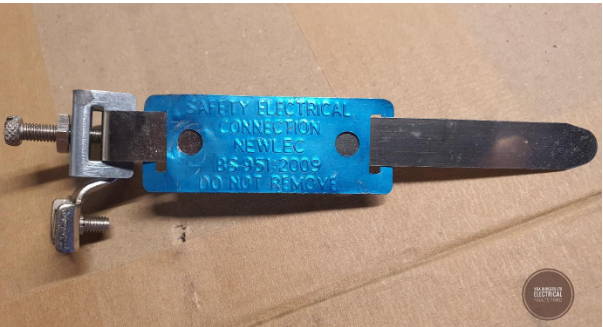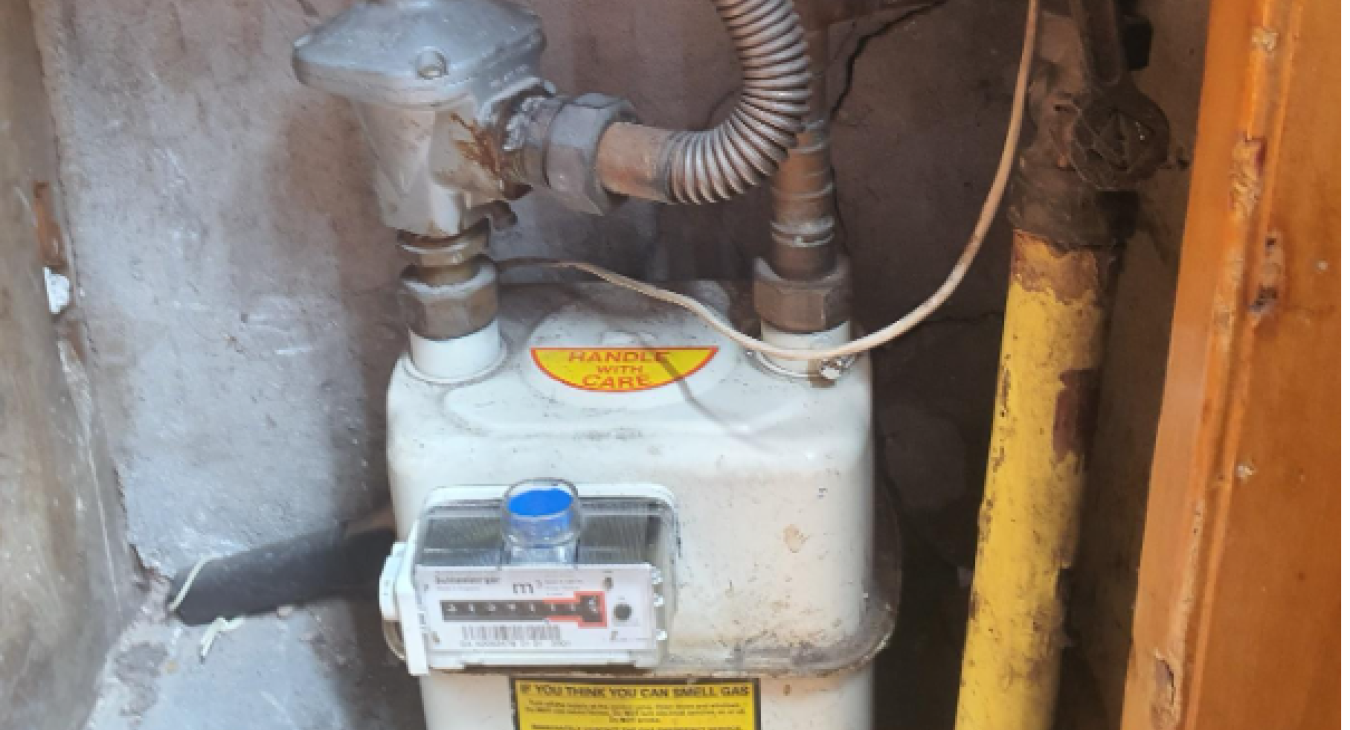Table of Contents
- 1 What is Electrical Equipotential Bonding?
- 2 What are extraneous conductive parts AND what is potential difference?
- 3 Why is Equipotential Bonding Needed to the Gas
- 4 What material and size should Bonding be?
- 5 What other parts may need bonding?
- 6 How far away can bonding be from the MET?
- 7 Can I carry out bonding myself?
- 8 What happens if there is no bonding?
- 9 Is Bonding and Earthing different?
- 10 What is Supplementary Equipotential Bonding?
- 11 Under what circumstances do we find bonding is needed?
- Summary
1) 1 What is Electrical Equipotential Bonding?
Electrical equipotential bonding is one of the most important electrical safety aspects of wiring systems. The purpose of Equipotential Bonding is to reduce the chance of electrical shock, the risk of fires and explosions and to assist in circuit disconnection through low resistance earth path connections.
By joining extraneous conductive parts of a property to the earthing of the electrical system, we reduce the chance of current flow through a person’s body during an electrical fault. We aim to ensure that voltages between parts are reduced to an acceptable potential difference under fault conditions.
Where there is NO GAS BONDING it may or may not be required.
Read on and I will explain.
Back to top2) 2 What are extraneous conductive parts AND what is potential difference?
Extraneous conductive parts are parts of the building, property or surroundings that are not part of the electrical system but introduce a path to earth. This could be a metallic pipe that enters the ground, structural steelwork that contacts the ground or other (normally metallic) objects that in some way introduce a ground potential.
We have to ensure that when an electrical fault occurs that these extraneous conductive parts are raised to the same voltage as the part of the electrical system that has become live.
Bear with me, let’s say your metal toaster develops a fault and the case becomes live at 120 or 230 volts. If you were to touch the toaster and simultaneously an extraneous conductive part, there would be a difference in voltage between the two parts meaning that current could flow between the two, I.E through your body. This difference in voltage is known as POTENTIAL DIFFERENCE.
When we take Equipotential earth bonding to the pipework, metalwork, and other extraneous conductive parts we ensure that in the event of a fault, all conductive parts are raised to the same voltage meaning no POTENTIAL DIFFERENCE and a minimised shock risk.
3) 3 Why is Equipotential Bonding Needed to the Gas
In many cases, the incoming Gas Supply is via a metal service pipe that enters the ground and introduces a dangerous earth potential. In these cases where there is NO GAS BONDING the gas service will need bonding at the meter pipework.
Exact location and placement should be checked against wiring regulations in your area.
It is not always possible to check if there is a need for bonding by simply visually examining the service meter and pipework and as such, a suitable electrical test should be conducted.
Where there is a resistance between the suspected extraneous conductive part and the earthing conductor of between 0.06 Ohms and 22k Ohms then the part should be bonded. Where there is a resistance of 0.05 ohms or less the part is already effectively bonded. If the reading achieved is above 22k Ohms then the part is NOT an extraneous conductive part and does not require bonding.
Back to top4) 4 What material and size should Bonding be?
The bonding cable is best made from solid copper conductors, marked or sleeved appropriately and depending upon local wiring codes can be anything from 6mm to 16mm cross sectional area. Your electrician will be able to calculate the correct size of bonding conductor required in your installation.
The cable should be connected to pipework using a BS951 clamp as can be seen in the photograph below. The connection should be adequately tight and should be tested to ensure a sufficiently low resistance has been achieved.
There are newer products on the market for pipework connections and as long as it is an approved connection, these other products should work just fine in achieving what is needed.

(BS 951 clamp for connection of bonding cable to pipework)
Back to top5) 5 What other parts may need bonding?
Other common parts that may need equipotential earth bonding include, structural steelwork, water pipework, gas tanks, water tanks, oil heating tanks and any part that, when tested, shows the need for equipotential earth bonding and that is likely to introduce a dangerous potential difference.
Back to top6) 6 How far away can bonding be from the MET?
There is a limit as to the length of the bonding cable before the thickness has to be increased. Your electrician will be able to calculate the maximum acceptable length of the bonding conductor that is needed before an increased thickness is required.
Once installed, the bonding connection must be tested to ensure that it meets the safety wiring regulations and is of a sufficiently low resistance to ensure electrical shock risk is minimised. An appropriate label must also be attached to warn not to remove the connection.
7) 7 Can I carry out bonding myself?
Electrical Equipotential bonding installation is a specialised job that requires sufficient knowledge of the local and national wiring regulations along with the ability to test the resultant connections using approved test equipment.
As such, DIY installation is not recommended as it is unlikely that the requirements of the regulations will be met through such installation practices.
Back to top8) 8 What happens if there is no bonding?
In cases where there is no equipotential bonding, it may not be required. The only way to know if metallic parts require bonding is to consult an electrician to carry out the required tests using the right test equipment.
There are also circumstances where an extraneous conductive part may test out as needing bonding but in fact, there is no need to bond the part because there may be no danger introduced.
Where a metal part is outside of a building and nowhere near electrical installations, it may not require bonding as there may be no danger that could be introduced. If in doubt, consult a professional electrician to carry out inspection and testing.
Back to top9) 9 Is Bonding and Earthing different?
YES.
Earthing (or grounding) is the connection of an exposed conductive part of the electrical installation to the means of earthing for that installation using a protective conductor.
Bonding is the connection of extraneous conductive parts of the electrical installation to the means of earthing for the installation to maintain the exposed conductive parts and extraneous conductive parts at the same potential (voltage).
An earth connection is carried out to things like plug sockets, Class 1 (exposed metal) light fittings, metal light switch face plates, appliances, and metal parts of electrical equipment.
Bonding is carried out to pipework, structural steel and other parts that may require it.
The earthing system is usually provided by the electricity supplier and enters with the service equipment. In older installations and remote areas, the earthing system may be the responsibility of the homeowner.
Where no earth is supplied by the electricity company, a metallic rod (or several) known as an earth rod, will need to be used along with the general mass of earth in order to achieve a measure resistance value low enough to satisfy code requirements.
Back to top10) 10 What is Supplementary Equipotential Bonding?
A protective bonding conductor can also directly link exposed conductive parts of the electrical system with extraneous conductive parts such as the case in special locations such as bathrooms. Supplementary bonding can be used to limit any voltage on electrical equipment under fault conditions within places that are particularly at risk such as wet rooms and bathrooms.
The human body requires very little electrical current in order to introduce shock hazards and as such, when our bodies are wet as is the case in a bathroom, they are even more at risk from electric shock.
Supplementary bonding helps to create an equipotential zone (a zone with no voltage differences) within areas where it is required and can be a vital addition to the earthing and bonding system in an electrical installation.
Back to top11) 11 Under what circumstances do we find bonding is needed?
Where the electrical system and electrical box / consumer unit / fuse box is very old, we are likely to see the need for bonding to the pipework and other extraneous conductive parts. Older electrical installations often did not specify that bonding must be carried out and as such, it is often required where older equipment is present.
Back to top12) Summary
Electrical systems often require metal parts of electric equipment to be connected to the system earth. The manufacturer of the electrical equipment will specify if their equipment needs an earth connection.
An un-bonded metal tap and un-bonded metal pipes may introduce a danger in the event of electrical fault current flowing. The best way to determine if metal parts of electrical systems or conductive parts within the building need bonding or earthing is to consult an electrician.
The electrician will compare the measured resistance value to the specific wiring regulations to determine if metallic pipes, metal gas parts, structural steel work or other conductive parts need to be bonded.
The resistance measurement obtained will determine what action is needed and if any alternative earth path is present.
Back to top
Read more articles
- Log in to post comments


